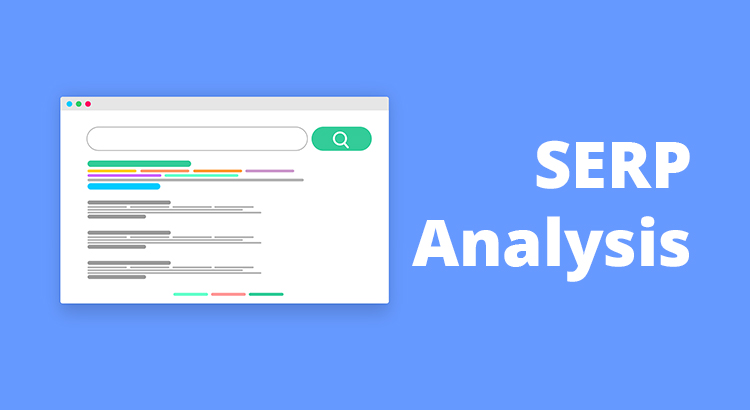SERP analysis helps you understand what pages already rank for your target keywords and what makes them successful. It’s an essential part of search engine optimization, allowing you to align your content with user intent. This process helps uncover gaps, assess content quality, and identify ranking opportunities. This blog will show you how to evaluate these results effectively and improve your visibility.
What Is SERP Analysis?
It is the process of examining the top-ranking pages for a keyword you want to target. The goal is to understand what kind of content currently performs well, what user intent those pages satisfy, and how your page can offer more value.
By looking closely at the competition, you can identify missing elements in their content and plan yours accordingly.
For example, if you’re writing a blog about healthy breakfast ideas and want to rank for the phrase “quick breakfast recipes”, a quick review might show that users prefer list-style posts with simple recipes and prep times. That helps you create the right type of content instead of guessing.
What Types of SERP Results Are There?
When you explore search listings on Google or similar platforms, you’ll see a variety of result formats. These include both paid and organic placements, along with additional features that can influence visibility and click-through rates.
Paid Listings
These appear at the top or bottom of search pages and are marked as “Sponsored”. They are part of advertising platforms where businesses pay for each click their listing receives.
Organic Results
Traditional text-based listings form the foundation of non-paid outcomes. These are influenced by relevance, content quality, and page authority. However, many now include extra features like images, video snippets, and review stars, making the competition tougher.
AI Overviews
This new format offers AI-generated summaries in response to informational queries. Initially limited to certain regions, it will become more widespread. These summaries can influence which pages get attention.
Featured Snippets
These appear at the very top of the page and offer a quick summary of the answer to a query. They may include text, lists, tables, or videos, and they often boost site visibility significantly.
Local Pack
When someone searches for nearby services, a map appears with three business listings. This is especially important for local companies that want to attract foot traffic or service-based clients.
Shopping Results
These show up when users enter product-related searches. Listings include product images, prices, and seller information. Businesses need to submit a product feed to participate in this section.
People Also Ask
This feature displays a list of related questions users commonly search for, with dropdown answers. It offers a chance to cover additional angles in your content and improve exposure.
Video Results
There are two main video formats: standard listings with thumbnails and dedicated video packs that include several clips. These are typically pulled from YouTube and are great for visual content creators.
News Box
Also called Top Stories, this section shows articles from news publishers covering current events. It requires registration in the Publisher Center and consistent updates to appear here.
Review Snippets
Some listings include star ratings and review counts, pulled from structured data. This can influence user trust and drive more clicks for product or service-based pages.
Knowledge Panel
This section appears on the right side of the page for well-known people, companies, or topics. It pulls information from trusted sources like Wikipedia and can enhance your authority in a niche.
Why Is Doing a SERP Analysis Important?
Looking closely at top-ranking listings offers several benefits for content creation and keyword targeting:
Relevance Check
It helps confirm whether a keyword truly matches your audience’s intent and aligns with your business objectives.
Content Format Insight
You can determine if users prefer how-to guides, listicles, videos, or long-form articles for that topic.
Opportunity Gaps
By studying existing results, you can identify what important details are missing and include them in your version.
Competitiveness Evaluation
Analyzing the quality and authority of the pages currently ranking gives you a clear idea of how difficult it may be to appear alongside them.
How to Do a SERP Analysis?
To evaluate what ranks well for your target keywords, you need to look beyond just the titles on the results page. This process helps you understand what users are expecting and how top-ranking pages are meeting those expectations. Here’s how to do it step by step:
1. Choose a Target Keyword
Begin by identifying a keyword relevant to your business, topic, or offer. It should have enough search volume to bring traffic but not be so competitive that you have no chance of ranking. Use keyword research tools like:
- Google Keyword Planner for volume and competition
- Ubersuggest, Ahrefs, or SEMrush for keyword ideas and difficulty scores
Pick one keyword to analyze deeply. For example, if you run a fitness blog, you might choose “home workout for beginners”.
2. Use Incognito or Private Mode to Search
Open a private or incognito tab in your browser before searching. This ensures you get a neutral view of the results, unaffected by your search history or location. Type in your chosen keyword exactly as users would.
This step gives you the real, unbiased results page experience. Some browsers also offer VPN extensions if you want to simulate searches from other regions.
3. Analyze the Top 10 Organic Results
Look closely at the top-ranking pages. Don’t just skim titles; open each one and evaluate:
- Page type: Is it a blog post, product page, category page, landing page, or video?
- Content format: Is it a listicle, how-to guide, case study, review, or something else?
- Tone and structure: Is the writing casual or professional? How is the content organized (headings, paragraphs, bullet points)?
- Visual elements: Are there images, videos, charts, or infographics?
Record patterns. For instance, if 8 out of 10 top pages are detailed guides with step-by-step formats, that’s the format users expect for that query.
4. Identify Special Search Features
Pay attention to extra elements that appear on the results page. These can include:
- Featured snippets (summary boxes at the top)
- People Also Ask boxes
- Video results
- Local packs (with map and local businesses)
- Shopping results, Top Stories, or Knowledge panels
Make note of these features. They give insight into user intent. If video results dominate, you may need to produce video content. If there’s a featured snippet, look at how it’s written so you can try to earn that spot.
5. Study Each Page’s Content in Detail
Open each of the top pages and assess the actual content:
- Depth: Does it cover the topic broadly or narrowly? Are there subheadings for common follow-up questions?
- Value: Are there unique insights, original research, or downloadable resources?
- Clarity: Is the content easy to understand? Are technical terms explained?
- Engagement: Are there internal links, calls to action, or reader comments?
- Accuracy: Is the information current and factually correct?
Ask yourself: if someone read this page, would their question be fully answered? Would they trust it enough to share it or act on it?
6. Spot Content Gaps and Weaknesses
This is the most strategic step. You’re not just copying what’s out there—you’re looking for opportunities to add more value. For each competing page, ask:
- What’s missing or only briefly covered?
- Are there outdated references or broken links?
- Could the structure or formatting be clearer?
- Are visuals poor or missing?
For example, if a competitor lists “10 tips for better sleep” but doesn’t link to supporting studies, you can create a similar post that includes research-backed sources and expert quotes.
7. Evaluate the Authority and Backlink Profile
Strong rankings aren’t just about content—they’re also about trust. Use SEO tools like Ahrefs, Moz, or SEMrush to check:
- Domain authority: A measure of the overall trust of the site
- Page authority: How strong is the specific page that’s ranking?
- Backlinks: How many external websites link to this page?
This helps you judge the competition level. If every top-ranking page has thousands of backlinks from trusted sites, you’ll need a stronger promotion plan. If some lower-authority pages are ranking, there’s an opportunity for newer content to compete.
8. Understand the User Intent Behind the Search
Intent is the reason someone searches for a term. Are they looking to learn, compare, buy, or take action? Look at the top pages and ask:
- Do they provide quick answers or deep explanations?
- Do they include product recommendations or comparison charts?
- Are they aimed at beginners or advanced users?
Matching your content to this intent is critical. If people are searching “best laptops for students,” they’re likely looking for product comparisons—not a blog post about laptop history.
9. Plan and Create Content That Outperforms
Once your analysis is complete, you should have a full picture of what users want and how top pages are delivering it. Your goal is to create something better. That could mean:
- Offering more depth or updated insights
- Making your layout more user-friendly
- Adding original graphics, videos, or tools
- Structuring your page to answer follow-up questions found in “People Also Ask” boxes
Finally, make sure your page is well-optimized technically. Use descriptive meta titles and headers, add schema markup where relevant, and ensure fast load times on mobile.
Wrapping Up
Performing a detailed search ranking evaluation helps you build content that aligns with what users expect and what search engines reward. By studying top results, understanding user needs, and addressing content gaps, you position your pages to perform better. This blog has covered all the key aspects to help you implement this process with confidence.


